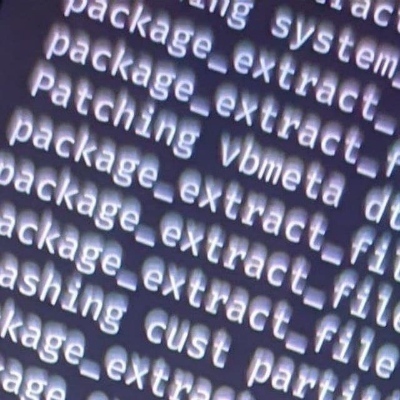- cross-posted to:
- linux@lemmy.world
- hackernews@lemmy.smeargle.fans
- hackernews@derp.foo
- cross-posted to:
- linux@lemmy.world
- hackernews@lemmy.smeargle.fans
- hackernews@derp.foo
I’m really excited for this. If it lives up to the hype I think it could become the defacto filesystem some day.
BTRFS, despite being a great filesystem, got a bad rep mostly due to its poor RAID5/6 implementation. It also lags behind in performance in many configurations and has been mostly relagated to a specialty filesystem. While it could make a great root filesystem few distros have adopted it as such.
ZFS has been similarly pigeon holed. It’s typically only used for building large arrays because it’s not very safe when used on a single device (edit: After some research this may not be true and is probably outdated or incorrect info stuck in my head) . It also lacks a lot of the flexibility of BTRFS, though you could say it trades flexibility for reliability.
bcachesfs on the other hand feels like it has the potential to be adopted as a root file system while also providing replication, erasure coding, high performance and snapshots; something that no filesystem has managed to date, at least on a wide scale.
What makes you question zfs safety on single devices?
Honestly this is probably me going off of outdated or even incorrect information. The fact that it has little adoption for that use case or as a root filesystem is probably the larger factor.
It’s been awesome to see Ubuntu embrace it over the last few releases though and that’s certainly starting to change things but since it’s not part of the Linux kernel that gives most other distros pause I think.
The lack of adoption is more about nervousness around who created it more than anything. It’s incredibly stable and very well tested.
It’s a shame because openzfs is really truely fantastic, so hoping this new thing keeps that momentum but for a wider audience.
But sad to see people like yourself suggest myths around zfs that don’t have any basis, probably one of the other reasons it’s less used, people think there must be some reason and things get made up along the way
ZFS was pigeonholed? That’s news to me. It’s used on datacenter storage solutions everywhere.
Pigeonholed on Linux because of the incompatible license. It can’t be a part of the kernel. No technical reason it can’t, only legal reasons it can’t.
I was referring to its lack of use as a root filesystem. It’s primarily used for large storage arrays both at home and in data centers.
It’s not a great choice for everyday use, that’s why. It’s a fine solution for scaled storage that makes it more performant on large disk arrays though.
Why though? I daily-drive it on multiple machines. The native encryption and ZFSBootMenu make it an awesome root fs. And incredibly easy to use with the way it handles mount points.
deleted by creator
Yeah. I only use it in Fedora because it was one of or the default partition scheme or the recommended one, can’t remember. But I’m impressed with it, actually. Enough to make me try to learn the basics, in case I have to install another distro.
Fedora adopted it as default with Fedora 33. SUSE has been using it as default for many years now. Facebook is one of the largest users and contributors to btrfs. It’s a solid filesystem when it’s not used to do things it warns you not to do.
It’s not that I don’t trust it. I’m sure some years ago it was the base of some distro in my laptop. The thing is I’m more old school in terms of filesystems and partitions. I need to learn how to use it properly to enjoy its advantages.
I was just adding context to the Fedora part of your statement. Honestly, Fedora has some work to do in order to really leverage it fully. When they fully integrate snapper, or something like it, then it will be actually using the benefits of btrfs imo.
Do you happen know if bchachefs’s raid5/6 implementation is working/stable?
I don’t believe it’s been marked stable yet but it doesn’t suffer from the raid write hole like BTRFS and claims to be more performant than ZFS’s implementation.
With it being merged into the kernel it should get much wider use and hopefully that helps it reach stability.
Thank you for the detailed reply!🤗
it doesn’t suffer from the raid write hole like BTRFS
if so, then that’s pretty awesome🎉
I’m a happy btrfs user, but it’s most definitely a great thing to see what seems like a really clean implementation like this that is able to learn from the many years of collective experience with ZFS and btrfs.
Built-in encryption in bcachefs sounds great, that’s the only thing that BTRFS has been missing for me so far.
Bonus points if it can be decrypted on boot like LUKS, and double bonus points if its scriptable like cryptsetup (retrieve key from hardware device, or network, or flash stick etc)
https://bcachefs.org/Encryption/
Will likely give bcachefs a spin as soon as it drops in Debian Unstable 😁
Triple bonus points if it can do swap files on the encrypted filesystem.
deleted by creator
Dunno yet. I’m going to remain optimistic until then.
Can’t BTRFS be used on a LUKS volume? Or does it have disadvantages?
Yeppp this is what I currently do, and offers the best performance IMO compared to using something like gocryptfs in userspace on top of BTRFS. Pretty happy with it except a few small things…
It can be a bit of a faff to mount on a new machine if its file manager doesn’t support encrypted volumes natively ☹️. On your daily you can have it all sorted in your crypttab and fstab so it’s not an issue there
My main problem though is if it’s an external USB device you have encrypted with LUKS, the handles and devices stay there after an unexpected USB disconnect… so you can’t actually unmount or remount the dm-crypt device after that happens. Anytime you try, the kernel blocks you saying the device is busy - only fix i’m aware of is a reboot.
If the encryption is managed by the filesystem itself, one would probably assume this kind of mounting & unexpected disconnect scenario would be handled as gracefully as possible
I see, good points.
I have also experienced that dangling devices break remounting it, but I think there’s a quicker solution for it:
dmsetup remove insert_device_name_here.
It’s still a manual thing, though, but 2 steps better. Maybe it can be automated somehow, I haven’t looked into that yet.
Good. For one thing, we can move on to drama about something else. But, also, I’d like to play with it without having to build a kernel.
I am on nixos and I can do exactly that.
Is this the new “Arch, btw?”
😂 hope its not
Seemingly. I’m also on nixos
I also use NixOS btw
I’m always nervous when hearing about new filesystems since a certain high profile news incident a several years back.
I really, really, really hope that Kent Overstreet has a really good relationship with any partner or spouse he may or may not have.






